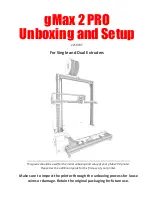
local workplace regulations when operating laser systems above Class I. It is the operator’s
responsibility to ensure that the installation and operation of the Model 4000 laser engraver with
Laser Diode Pointer option be performed in accordance with all applicable laws.
Copies of ANSI Standard Z136.1-1993 are available from Epilog Corporation or from:
Laser Institute of America
12424 Research Parkway, Suite 125
Orlando, FL 32826
(407) 380-1553
ELECTRICAL SAFETY.
The AC input power to the Epilog Radius Model 4000 Laser Engravers is potentially lethal and is
fully contained within the cabinet.
DO NOT open the power inlet panel on the rear of the unit. There are no operator-
serviceable components inside, and opening this cover will expose the operator to the
engraver’s AC input power.
DO NOT make or break electrical connections to the engraver system when the unit is turned
on.
FIRE SAFETY.
Laser engravers represent a significant fire hazard. Most engraving materials are inherently
combustible, and while the objective of most engraving and cutting operations is to vaporize
material without burning, it is astonishingly easy to ignite a flame. Usually this is a simple
“flare” of burning gases, issuing from the focused spot on the workpiece, which follows the
moving spot and which extinguishes itself as soon as the laser beam is modulated off. But should
the workpiece actually be set on fire, the fire must be extinguished by the operator at once, or the
engraver will be seriously damaged or destroyed!
DO NOT operate the engraver in the presence of unnecessary combustible materials,
explosives, or volatile solvents such as acetone, alcohol, or gasoline.
DO NOT let the engraver operate unattended, especially when performing slow cutting
operations on easily combustible materials such as paper or poster-board. Again, if a fire
starts, it can destroy the engraver!
11












































